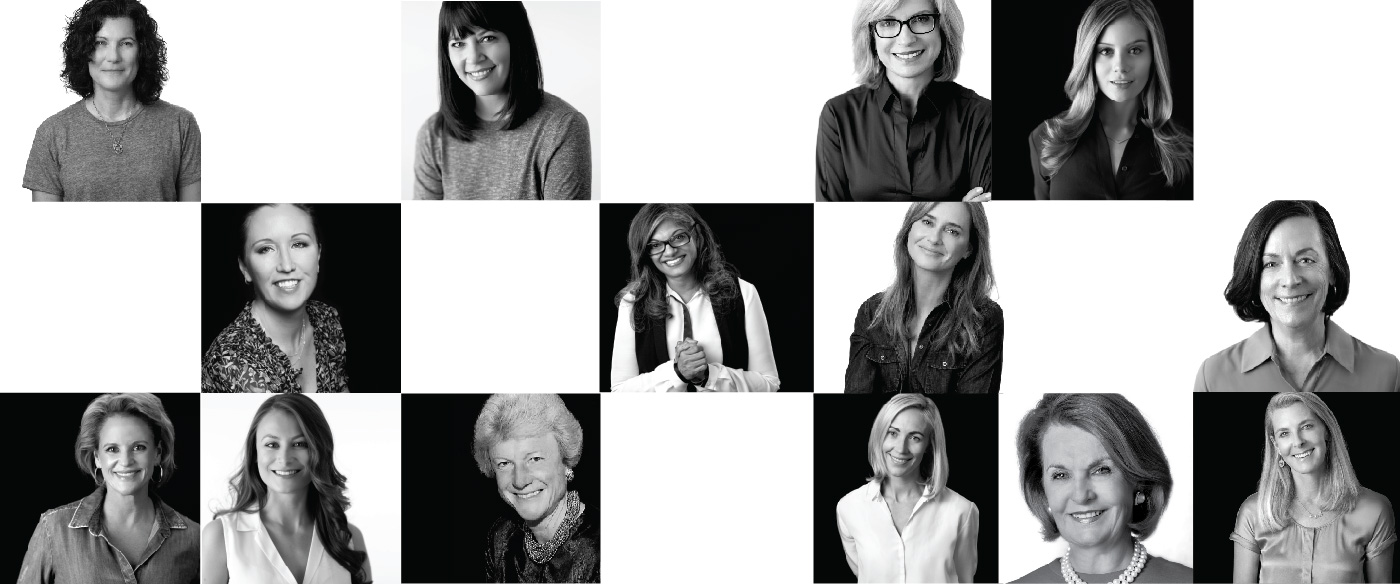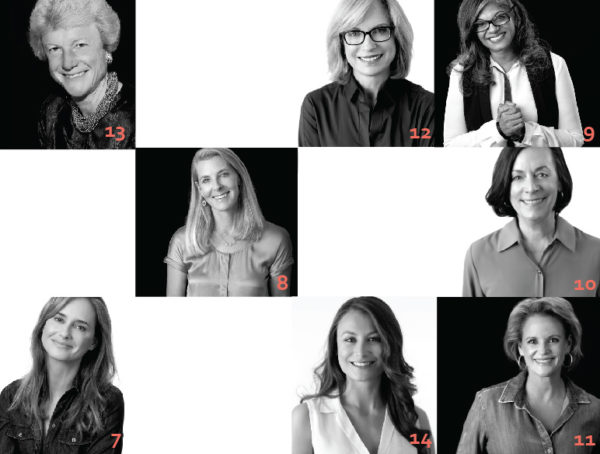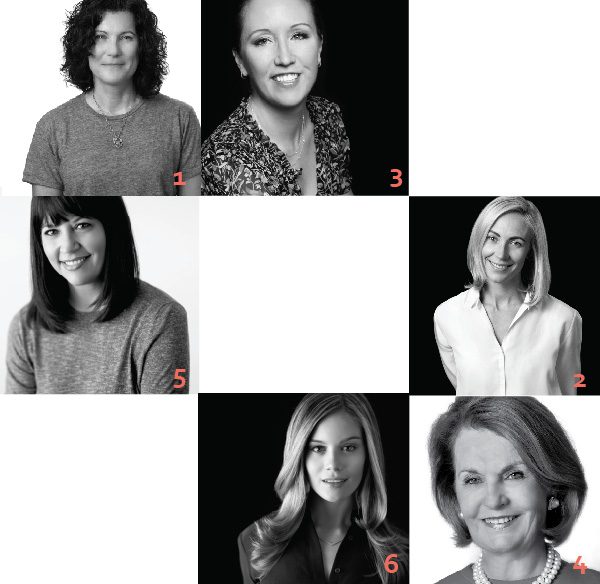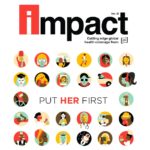“When Bill and I started our foundation 15 years ago, we pretty much thought in terms of grant-making, period,” says Melinda Gates, co-chair of the Bill and Melinda Gates Foundation and co-chair of the newly launched Maverick Collective. “We learned our lesson fast. Making change is about building coalitions. All the grants in the world can’t eradicate a disease, or provide universal access to contraceptives or put empowerment at the top of the agenda. Only making your most powerful case and bringing others along can do that.”
As one of the leading advocates for improving the health and rights of girls and women in the developing world, Gates went looking for meaningful ways to engage others to join the effort.
What she found was a very receptive audience.
The recent release of the Global Goals makes a clear call for increased investment in girls and women, for more advocates and for new health solutions to end extreme poverty by 2030. The authors of the goals argue that there is a unique window of opportunity to make good on the historic advancements in the health, rights and dignity of people worldwide. Gates believes philanthropists have a transformative and unrealized role to play in achieving that goal.
“Traditional philanthropy was defined as waiting until you were really old and very rich and writing a lot of checks,” explains Daniel Schley in Forbes magazine. The chief executive of Foundation Source, a group that helps family foundations become more efficient, went on to write, “but the real power, drive and momentum in modern philanthropy is coming from people in their 40s and 50s who generated a great deal of wealth at an early age and have decided to leverage that wealth in philanthropy.”
This new breed of philanthropists is looking for a deeper level of engagement. They want to collaborate with other philanthropists and they keenly understand the worth of their resources and their voice. The problem is that few find opportunities that leverage their full range of assets.

(RE) IMAGINING PHILANTHROPY
“What we’re hearing is that people want greater engagement with their nonprofit partners — especially women philanthropists,” says Kate Roberts, co-founder of Maverick Collective and PSI’s senior vice president of Corporate Partnerships and Philanthropy. “There is a dire shortage of resources for innovation. To lift girls and women out of extreme poverty, we need new and better health products and services. We need stronger health systems and we need more advocates speaking for those who may otherwise not be heard. This is an ideal role for today’s extremely motivated philanthropist.”
According to Women Moving Millions’ Jessica Houssian, “North American women control approximately $13.2 trillion dollars. By 2026, North American women alone could give one trillion dollars annually if they collectively gave 1.7 percent of their wealth. And in the next 40 years, women will inherit more than 70 percent of the $41 trillion dollars in expected intergenerational wealth transfer. Women today have unprecedented financial power. And with that power comes the opportunity to shift philanthropic priorities to focus on women and girls.”
But so far the funding hasn’t matched the rhetoric. According to the UN Foundation, programs for girls and women receive less than two cents of every development dollar, particularly those targeting girls between 10-14 years old.
AN IDEA QUIETLY BECOMES A REALITY
In 2012, Her Royal Highness the Crown Princess Mette-Marit of Norway visited India as part of her work advocating for girls and women. It was there that she reconnected with Roberts after visiting a PSI-India health project. The two, who had spent time together at global conferences through the years, shared similar frustrations with the amount of talk and lack of action they saw. They decided to develop something together that would engage women outside of the development community to help them become better advocates, and bring in new resources to solve some of the toughest challenges facing girls and women. And, it would be oriented to action.
“When everyone contributes what they have to offer, we help lift girls and women everywhere.”
—Her Royal Highness The Crown Princess Mette-Marit of Norway, co-founder and co-chair of Maverick Collective
With 47 years of experience developing and implementing health solutions for girls and women and a network of nonprofit organizations in 65 countries, PSI was a logical fit as the implementing partner to help bring the idea to life. And, PSI had experience in helping people like Ashley Judd, Debra Messing and Mandy Moore become effective and recognized advocates for girls and women.
With support from the Bill & Melinda Gates Foundation, Roberts and The Crown Princess quietly began to build a collective of bold, like-minded women philanthropists and advocates. Given Melinda Gates’ drive to build advocates herself, she and Her Royal Highness would serve as co-chairs. A powerful new initiative was born: Maverick Collective.
“The Global Goals make a clear call for more advocates, greater innovation, new resources and a sharp focus on improving the health and rights of girls and women,” says HRH The Crown Princess Mette-Marit. “Maverick Collective was designed to respond to this call. When everyone contributes what they have to offer, we help lift girls and women everywhere.”
PILOT, PROVE, LEVERAGE, SCALE
The Maverick Collective model begins with a team of global health experts and the development of pilot projects in the areas of HIV prevention; reproductive health; maternal and child health; water, sanitation and hygiene; non-communicable diseases; and the prevention of gender-based violence. Maverick Collective members commit their time, skills and financial resources. They work closely with technical teams in each country to identify issues and develop solutions that if proven effective can help improve the way health is delivered to girls and women. These projects have the potential to unlock additional funding to reach even more women. At the same time, members begin their education to become informed advocates with intensive training from a range of health and communications experts.
RESULTS
In three years, Maverick Collective has helped unlock $60 million in funding and impacted the lives of close to 300,000 girls and women. With 14 founding members — all women — and pilot projects in 13 countries, the group is showing promise as a new model of philanthropic partnership. On the advocacy front, Maverick Collective members have taken their message to the press, to the United Nations, the Institute of Design at Stanford, Social Innovation Summit, Cavendish Global Forum, Harvard Business School, Women Moving Millions Summit, Nexus Summit, TEDx and Women Deliver, to name just a few.
All of Maverick Collective’s founding members are women. But Roberts says the effort is open to men as well.
“It’s important to engage men as champions, and we are looking forward to our first male member. The world certainly needs more men advocating for girls and women.”
A DESIGN THINKER PUTS HER FIRST
In Tanzania, San Francisco-based design thinker and founding member Pam Scott is working with PSI’s local staff to better understand unintended teen pregnancy from the girl’s perspective. They’ve partnered with teen girls and are using human- centered design to develop and test solutions that give girls access to the contraceptive services they need and want. The ideas they generate with teens will be rolled-out throughout Tanzania. Scott believes integrating human-centered design into health programs for teen girls has far reaching potential across countries and organizations.
“The reason that so much philanthropy has failed and people have put billions of dollars into solutions that don’t actually solve anything is hubris,” says Scott. “Who am I to ever say what someone in the developing world needs? I want to hear from them. We have started experimenting with what it looks like when we bring a radically collaborative form of human-centered design to the issue of teen pregnancy and when girls are at the very center and part of that conversation.”
The design approach piloted in this project influenced a PSI-led $30 million initiative funded by the Bill and Melinda Gates Foundation and the Children’s Investment Fund Foundation called Adolescents 360. The goal of the project is to increase contraceptive use among adolescent girls in three countries. PSI credits Scott’s approach as a factor that helped best position the organization to develop the winning concept.
A SURVIVOR EMBRACES HER POWER
Following one of India’s most recent, horrific and high-profile incidents of violence against women — the brutal rape and torture of Jyoti Singh on a New Delhi bus — Maverick Collective founding member and violence survivor Indrani Goradia joined forces with PSI India to test a novel approach to preventing gender-based violence and supporting survivors. The approach brings together local organizations, engages boys and men, and connects community leaders and policymakers in a coordinated response.
As a survivor, speaker and certified life coach, Goradia helped PSI think differently about how to approach negative gender norms, stereotypes and stigma both programmatically and among PSI’s 9,000 staff worldwide. She regularly conducts trainings to improve gender equality across programs and within teams.
Two years after the start of the project, USAID joined Goradia and PSI to create a $10 million program, now the largest and most far-reaching of its kind in India. The USAID partnership will expand program activities, reach more girls and women, and amplify its impact in preventing and addressing violence across India.
WITH A NEW MODEL COMES HARD LESSONS
PSI faced its fair share of challenges in creating Maverick Collective. “One of our goals is to serve as a model for other organizations, so we feel particularly responsible to share the lessons we learn,” says Colleen Gregerson, director of Maverick Collective and PSI’s vice president of Corporate Partnerships and Philanthropy.
“Inviting members to truly be part of the team is difficult and uncomfortable and completely necessary.”
What are her three most important lessons?
“First, plan for a culture shift. This takes time, training and development of a new language of collaboration.
Talk about it. Build structures that can support this culture shift, get buy-in from senior leadership at headquarters and country level, and set expectations early with internal and external partners.”
“Second, transparency builds trust. Openness, honesty and a willingness to admit when things don’t go as planned are essential to building an effective partnership. We learned to approach problems and develop solutions together — and set meaningful targets from the outset. Sometimes we get that right, other times we stumble. A partnership charter or similar agreement is a useful framework to ensure everyone is on the same page.” “Third, one size doesn’t fit all. It was important for us to learn how to balance the need for bespoke member experiences and to build the right structures so we could properly staff the work with limited resources. We settled on a core package of services we offer to members knowing we’ll need to maintain the flexibility to meet evolving member needs.”
CREATING A PARADIGM SHIFT
Maverick Collective is one effort working to ensure girls and women reach their full potential. Its co-chairs see it as part of a bigger picture solution that’s needed to lift girls and women and to better engage philanthropists and advocates.
“My hope is that we’ll see Maverick Collective members acting as catalysts for others to use their resources, everything from their voice to their ideas to their money, to empower women and girls around the world.”
—Melinda Gates, co-chair of Maverick Collective
“My hope is that we’ll see Maverick Collective members acting as catalysts for others to use their resources, everything from their voice to their ideas to their money, to empower women and girls around the world,” says Gates. “I hope we’ll see other organizations replicating the model to help people get involved in tackling other important issues.”


MEET THE FOUNDING MEMBERS
NON-COMMUNICABLE DISEASE
1. Kathryn Vizas is helping save women’s lives through early detection and treatment of cervical cancer. Her project in India trains doctors to provide screening and treatment in a single visit and increases awareness of this deadly disease.
WATER, SANITATION, AND HYGIENE
2. Camilla Hagen Sorli is working to improve the dignity and health of women and girls in Vietnam. Her project will create a sustainable commercial market for quality, hygienic toilets with the unique needs of women in mind.
REPRODUCTIVE HEALTH
3. Cristina Ljungberg is working to improve sexual, reproductive and menstrual health for teen girls. Her project in Nepal will create girl-centered solutions to tackle barriers, especially to menstrual hygiene, in the adolescent health landscape.
4. Victoria Sant is working to empower girls to reach their full potential. Her project in Honduras is providing girls with safe spaces to learn, trained mentors and sexual and reproductive health education and services.
5. Ana Morales is working to empower teen mothers and fathers in El Salvador to break the cycle of poverty. Her project aims to postpone second pregnancies in teen girls and engage male partners in tackling harmful cultural norms.
6. Caitlin Heising is working to give teen mothers contraceptive choice to decide their futures. Her project in Nicaragua will address the sexual and reproductive health needs of teens through a sustainable clinic model.
7. Pam Scott, a design thinker by profession, is using human-centered design to find a sustainable way to address unintended teen pregnancy in Tanzania.
8. Stasia Obremskey is helping bring greater contraceptive choice to women. Through a mobile phone system, her project in Mozambique will link rural women to health services and products, as well as test delivery of a new injectable contraceptive.
GENDER-BASED VIOLENCE
9. Indrani Goradia is on a mission to end gender-based violence. Her projects in India and Trinidad and Tobago will work to transform cultural norms, engage local communities and policy-makers and expand support services for survivors.
10. Barbara Jones is working to bring gender-based violence to light. Her project in Myanmar will engage the private health sector, challenge entrenched norms and provide services to survivors.
11. Kimberly Agnew is working to empower Haiti’s most vulnerable girls to live healthy lives free of violence. Her project will create a network of support for girls to holistically address their psychosocial, legal and health needs.
MATERNAL AND CHILD HEALTH
12. Diane Powell is piloting mobile clinics to reach rural women where they are. Her project in Senegal will bring ante- and post-natal health services to expectant and new mothers and link them with the existing public health network.
13. Martha Darling is championing the use of mobile technology to deliver maternal and child health care. Her project in India will link pregnant women and new mothers with health products and services through community-based female entrepreneurs.
14. Sara Ojjeh is helping to save the lives of mothers and newborns through clean delivery kits. Her project in Uganda will distribute simple tools and two medicines – chlorhexidine and misoprostol – to ensure women give birth safely and hygienically.



